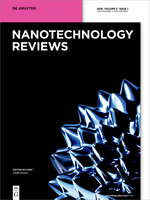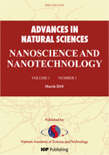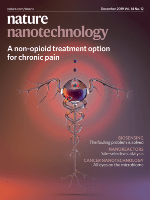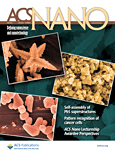
Advances in Nano Research
Scope & Guideline
Transforming Ideas into Nano Solutions
Introduction
Aims and Scopes
- Nanomaterials and Nanostructures:
Research on the synthesis, characterization, and application of various nanomaterials, such as carbon nanotubes, graphene, and metal nanoparticles, focusing on their unique properties and potential uses in technology and medicine. - Nanomechanical and Vibrational Analysis:
Studies involving the mechanical properties, vibration behavior, and stability of nanostructures and nanocomposites, employing advanced analytical and numerical methods to understand their dynamic responses. - Nanotechnology in Medicine and Healthcare:
Investigations into the use of nanotechnology for medical applications, including drug delivery systems, nanomedicine, and the development of biomaterials that enhance therapeutic outcomes. - Environmental Applications of Nanotechnology:
Research on the role of nanotechnology in environmental remediation, pollution control, and sustainable practices, highlighting the potential of nanomaterials to address ecological challenges. - Educational Integration of Nanotechnology:
Exploration of strategies for integrating nanotechnology concepts into educational curricula, particularly in STEM fields, to enhance learning and engagement among students. - Advanced Computational Techniques:
Application of machine learning, artificial intelligence, and computational modeling in the study and optimization of nanoscale systems and materials, facilitating innovative solutions to complex problems.
Trending and Emerging
- Smart Materials and Structures:
A growing focus on the development and application of smart materials that incorporate nanotechnology for enhanced performance in various engineering applications, including sensors and actuators. - Nanotechnology in Sports Science:
An emerging theme that explores the application of nanomaterials in enhancing sports equipment, performance, and injury prevention, reflecting a multidisciplinary approach to sports science. - Sustainable Nanotechnology:
Research aimed at developing sustainable practices using nanotechnology, particularly in construction and environmental remediation, highlighting the potential of nanomaterials to contribute to sustainability goals. - Machine Learning and Data-Driven Approaches:
An increasing trend towards utilizing machine learning and AI techniques to analyze and predict behaviors in nanoscale systems, which enhances the efficiency and accuracy of research outcomes. - Nanotoxicology and Safety Assessment:
Growing attention on the safety and toxicity of nanomaterials, emphasizing the need for comprehensive studies to understand their environmental and health impacts as nanotechnology becomes more widespread.
Declining or Waning
- Traditional Materials Science:
Research focused on conventional materials science without the integration of nanotechnology has diminished, as the field increasingly emphasizes the unique properties and applications of nanoscale materials. - Basic Theoretical Studies:
Papers that solely discuss theoretical aspects of nanotechnology, without practical applications or experimental validation, have become less frequent, indicating a shift towards more applied research. - Generalized Nanotechnology Applications:
There has been a decrease in publications that broadly discuss nanotechnology applications without specific focus on niche areas like medicine, electronics, or environmental science, reflecting a trend towards more targeted research.
Similar Journals

Journal of Nano Research
Pioneering Discoveries in Materials ScienceThe Journal of Nano Research, published by Trans Tech Publications Ltd, is a distinguished academic journal dedicated to the rapidly evolving field of nanotechnology and materials science. With an ISSN of 1662-5250 and an E-ISSN of 1661-9897, the journal has been an important platform for researchers and professionals since its inception in 2008, continuing to provide high-quality peer-reviewed research through to 2024. Nestled in Switzerland, the Journal of Nano Research plays a pivotal role in disseminating cutting-edge findings, as recognized by its categorization in Q3 for Materials Science and Physics while being positioned in Q4 for Nanoscience and Nanotechnology as of 2023. With Scopus rankings highlighting its impact, including Rank #129 in general Physics and Astronomy and Rank #300 in Materials Science, this journal is crucial for academics seeking to stay ahead in research trends and innovations in nano-related disciplines. Although it operates under a subscription model, the journal's objectives include fostering collaboration and knowledge-sharing among researchers, making it an invaluable resource for anyone immersed in the world of nanotechnology.

Nanotechnology Reviews
Unlocking Innovations at the NanoscaleNanotechnology Reviews, published by DE GRUYTER POLAND SP Z O O, stands at the forefront of the multidisciplinary field of nanoscience and nanotechnology. With an Open Access model adopted since 2019, this journal, identifiable by its ISSN 2191-9089 and E-ISSN 2191-9097, disseminates vital research that is accessible to a global audience. The journal is located in Germany and has established itself as a premier platform for innovative research, boasting impressive quartile rankings: Q1 across several categories including Biotechnology, Energy Engineering, and Materials Science, as well as a Q2 classification in Biomaterials as of 2023. The diverse scope enables authors to contribute to a range of topics, from biomedical applications to energy solutions and advanced materials, making it essential reading for researchers, professionals, and students passionate about cutting-edge developments. Additionally, with Scopus rankings highlighting its value across various domains and robust percentiles, including 94 in Engineering (miscellaneous), 93 in Medicine (miscellaneous), and 88 in Biotechnology, Nanotechnology Reviews is an influential and respected journal that fosters scientific dialogue and innovation.

Advances in Natural Sciences-Nanoscience and Nanotechnology
Empowering Researchers with Cutting-Edge Nanotechnology FindingsAdvances in Natural Sciences-Nanoscience and Nanotechnology is a premier academic journal published by IOP Publishing Ltd, dedicated to the dynamic and rapidly evolving field of nanoscience and nanotechnology. With an ISSN of 2043-6254 and E-ISSN 2043-6262, this journal encompasses a diverse spectrum of research encompassing both theoretical frameworks and applied technologies, bridging the gap between engineering, industrial practices, and materials science. Holding a reputable position within the Q3 quartile for Electrical and Electronic Engineering, Q2 in Industrial and Manufacturing Engineering, and Q3 in Materials Science, it ranks significantly due to its robust review process and quality of articles. With a convergence span from 2010 to 2024, the journal aims to foster an open dialogue among researchers and professionals, providing essential insights into cutting-edge advancements and interdisciplinary applications in nanotechnology. The open access policy enhances visibility and accessibility, ensuring that every article extends its reach beyond the confines of traditional scholarly communication. Situated in the United Kingdom, this journal not only bolsters the global discourse on nanoscience but also serves as a critical resource for those at the forefront of research and innovation.

Journal of Nanoanalysis
Transforming Research into Practical Nanotechnology SolutionsThe Journal of Nanoanalysis is a leading publication in the field of nanotechnology, dedicated to advancing the understanding and application of nanoscale analysis methodologies. Published by BORNA SANJESH KIMIA CO-BSK CO, this journal aims to provide a comprehensive platform for researchers, professionals, and students to disseminate cutting-edge findings and innovative approaches in nanomaterials characterization, nanoelectronics, and related areas. With a focus on high-quality peer-reviewed articles, the journal supports the global scientific community in fostering interdisciplinary collaboration and knowledge sharing. Although currently lacking an explicit impact factor, the Journal of Nanoanalysis is poised to make significant contributions to the field, with its commitment to open access and accessibility globally enriching the pool of research available for academic and practical advancements.

Boletin del grupo espanol del carbon
Driving Excellence in Carbon Research and DevelopmentBoletin del Grupo Español del Carbon, a pivotal journal in the field of carbon science, is published by the Grupo Español Carbon and serves as a significant platform for disseminating research related to carbon materials, their applications, and advancements in carbon technology. With an ISSN of 2172-6094, this journal aims to bridge the gap between academia and industry by featuring original research articles, reviews, and noteworthy contributions from specialists in the sector. Though currently not designated as Open Access, the journal's commitment to quality ensures that the articles are available through various academic databases, enhancing accessibility for researchers, professionals, and students alike. Located in Zaragoza, Spain, at the prestigious Instituto Carboquímica, the journal endorses rigorous peer review and strives to foster international collaboration within the carbon research community. By maintaining high academic standards, Boletin del Grupo Español del Carbon aspires to impact the fields of materials science and environmental sustainability significantly.

Nanotechnology Science and Applications
Leading the Charge in Nanotechnology Research and Applications.Nanotechnology Science and Applications, published by DOVE MEDICAL PRESS LTD, is a premier open-access journal dedicated to advancing knowledge in the fields of nanoscience and nanotechnology, particularly focusing on their applications in bioengineering, biomedical engineering, and pharmaceutical sciences. Since its inception in 2008, this journal has provided a platform for the dissemination of high-quality research that is rigorously peer-reviewed, ensuring that only the most impactful findings reach a global audience. With an impressive impact factor reflected in its recent categorization in the Q1 tier for Pharmaceutical Science and Q2 for Bioengineering and Nanoscience, it stands as a critical resource for researchers, practitioners, and students eager to explore the cutting-edge innovations within these rapidly evolving disciplines. The journal's commitment to accessibility and its robust indexing in Scopus—ranked highly in its respective categories—reinforces its importance as a leading forum for the exchange of scientific knowledge and the fostering of collaborative research in nanotechnology applications.

Reactions is a dynamic open-access journal published by MDPI, dedicated to the advancement of research in the fields of Chemical Engineering and Chemistry. Launched in 2020, the journal aims to provide a platform for scientists and researchers to share their findings and innovations, facilitating the synthesis and dissemination of knowledge within the global academic community. With an impact factor that reflects its growing influence, Reactions ranks 47th in the Chemical Engineering category and 72nd in Chemistry on Scopus, placing it within the vibrant landscape of contemporary chemical research. Housed in the picturesque city of Basel, Switzerland, the journal is committed to open access, ensuring that its high-quality content is readily available to all. This commitment not only enhances visibility but also fosters collaboration among researchers, professionals, and students striving to push the boundaries of chemical sciences. As we look towards 2024 and beyond, Reactions continues to encourage submissions that explore groundbreaking methodologies, innovative applications, and transformative theoretical frameworks in chemistry and chemical engineering.

ACS Biomaterials Science & Engineering
Exploring the Boundaries of Biomaterials ResearchACS Biomaterials Science & Engineering, published by the American Chemical Society, serves as a premier platform for the latest advancements and research in the fields of biomaterials and biomedical engineering. With an impressive impact factor and a strong reputation reflected in its ranking—Q2 in Biomaterials and Q1 in Biomedical Engineering—the journal attracts a diverse and engaged readership. Since its inception in 2015, it has aimed to foster innovation by publishing high-quality research articles, reviews, and perspectives on the synthesis, characterization, and application of biomaterials. Researchers and professionals benefit from the journal's rigorous peer-review process and its focus on translational science, making it essential for those looking to stay at the forefront of biomaterials research. Located in Washington, DC, USA, the journal plays a pivotal role in connecting academic and industrial sectors, ultimately driving advancements that impact biomedicine and related fields.

Nature Nanotechnology
Pioneering Innovations at the Nanoscale.Nature Nanotechnology, published by NATURE PORTFOLIO, stands at the forefront of scientific innovation, focusing on the rapidly evolving field of nanoscience and nanotechnology. With an impressive impact factor and ranking in the top Q1 quartiles across multiple disciplines—including Atomic and Molecular Physics, Bioengineering, and Materials Science—this journal is a pivotal resource for researchers and professionals dedicated to advancing knowledge and applications at the nanoscale. Its diverse scope encompasses cutting-edge research that bridges disciplines, addressing critical challenges in engineering, physics, and biomedical fields. Although the journal currently does not offer an open-access option, readers can access a wealth of information that is vital for anyone involved in pioneering research and development efforts. With its robust editorial standards and a commitment to publishing high-caliber, groundbreaking work, Nature Nanotechnology serves as an indispensable platform for the dissemination of transformative ideas that will shape the future of technology and science.

ACS Nano
Transforming Knowledge into Nanotechnology BreakthroughsACS Nano, published by the American Chemical Society, stands as a prestigious journal in the domains of Engineering, Materials Science, Nanoscience, and Physics. With an exceptional impact factor reflecting its standing as a Q1 category journal in multiple disciplines, it plays a pivotal role in disseminating groundbreaking research from 2007 to 2024. Known for its rigorous peer-review process, the journal boasts impressive Scopus rankings—positioned at #1 in General Engineering and #6 in General Physics and Astronomy—placing it among the top 1% of journals in its field. Although it is not an open-access publication, ACS Nano provides a wealth of knowledge that is essential for advancing the development of nanotechnology and its applications across various industries. Researchers, professionals, and students alike will find in its pages a trove of innovative studies and insights that drive the future of materials science and engineering.